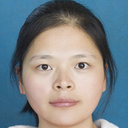The expression and the role of protease nexin-1 on brain edema after intracerebral hemorrhage.
Từ khóa
trừu tượng
Brain edema is one of the most frequent and serious complications of intracerebral hemorrhage (ICH), but how the ICH cause brain edema is unknown. Our studies were designed to investigate the regulation and distribution of protease nexin-1 (PN-1), thrombin and aquaporin-4 (AQP-4) in brain edema after ICH in rat and human brain in vivo. Our result showed that the severity of cerebral edema resulted from an acute stage of ICH. The PN-1-thrombin system modulated cerebral edema after ICH. Thrombin and AQP-4 increased to aggregate cerebral edema after ICH. In order to control the deleterious effect of thrombin's overexpression, PN-1 appeared quickly and abundantly to inhibit thrombin and lessen the cerebral edema. PN-1 was distributed in neurons and glial cells of cerebral cortex, hippocampus, thalamencephalon, basal ganglia, cerebellum and circum-encephalocoele in rat and human brain. The expression of AQP-4 is different between human and rat. Thus, we demonstrated that the animal experimental approach was, however, not sufficient by itself and needed to be corroborated by observations on human brains.



